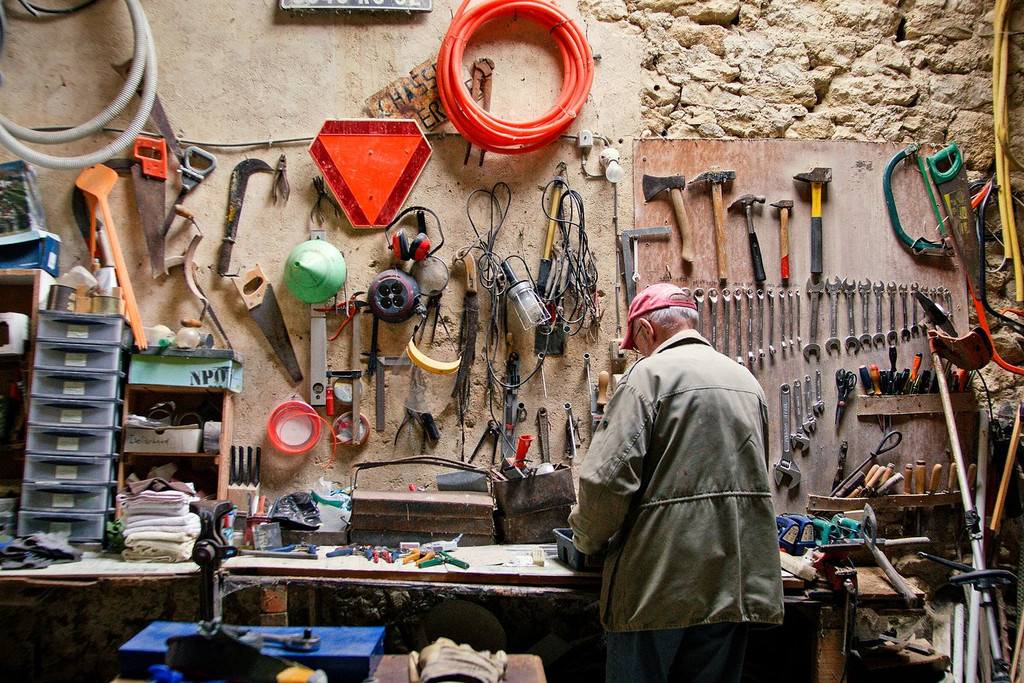“Would visitors to the Gurlitt exhibition kindly leave all bags in the cloakroom?”, “Please wait here until the next member of staff is available,” and “Thank you for your patience.” At times the line of visitors stretches outside the entrance door. The route that the queue has to follow to the cash desk is a clear indication that the “Gurlitt collection” is an exhibition like no other.
Four years have passed since “Focus” magazine unearthed the “Nazi treasure trove” and three have gone by since the Museum of Fine Arts Berne accepted the unexpected inheritance. The son of German art dealer Hildebrand Gurlitt, Cornelius Gurlitt, who passed away in Munich at the age of 81, bequeathed the “treasure trove” to the museum in Switzerland which, according to “Focus” magazine, included no fewer than 1,500 “missing works of art” with an estimated value of over € 1 billion. The affair became a scandal. It sparked rumours and controversy worldwide over stolen art and the integrity of collectors, dealers, museums and the authorities. It also led to a protracted court case over the validity of the will.
Value lowered by experts
So, a lot happening before a single picture was hung on a wall. Nobody is referring to it as “treasure” any more – the experts involved in the Swiss-German exhibition and research project are even steering clear of the word “collection”. Instead they are using terms like “art trove”, “cache of artworks” or simply “cache”. The clearer the contents became, the more realistic the appraisal of the legacy’s significance – that is to say it was lowered.
Much of what is on display in Berne is in fact on paper. Gurlitt senior mainly collected drawings, watercolours and prints. He had a passion for German Expressionism and artists like Otto Dix, George Grosz and Max Beckmann. This legacy supplements the existing collection of the Berne institution – it has not been given its own museum. But that doesn’t explain the long queues to the cash desk for this special exhibition.
The legend of the “missing Nazi treasure” lives on. Such claims are in fact unfounded – the paintings were the perfectly legal private property of a private citizen and suspicions of stolen art have only been confirmed in the case of six out of 1,500 items. The museum in Berne and the Bundeskunsthalle in Bonn – which are now working together to clarify the matter – are clearly benefiting from this PR effect. Along with such advantages, there are also challenges presented by the historical context of the works which is currently overshadowing the aesthetic appeal of the art. The Bonn exhibition focuses on the art theft of the Nazi dictatorship while the one in Berne explores the ostracism of the genre of modern art dubbed as “degenerate” by the Nazis. Cornelius Gurlitt’s father Hildebrand played a more than ambivalent role here. He believed in the art which the Nazis wanted to remove from the face of the Earth. At the same time, he helped them as a dealer and liquidator of the regime.
Advised against inheritance contract
In 2014, federal government advised the Bernese against entering into an inheritance contract with Germany because this would introduce a tighter definition of art theft here which had applied in Germany until then but not Switzerland. This definition was not restricted to art stolen by the Nazis from private owners, but also covered art that their victims were forced to sell due to persecution. The Bernese signed anyway and federal government is today hailing it as an “exemplary” approach. It now also contributes when museums want to conduct in-depth research into the origins of their artworks. It did not want to do that either initially.
On the very day when the special exhibition opened in Berne, a case resurfaced in Basel which actually seemed to have been resolved. In 2008, the Kunstmuseum Basel had turned away the heirs of Hermann Glaser. They had laid claim to 120 works from the museum’s collection. Glaser, a Jewish museum director in Berlin, had to auction his private collection before fleeing in 1933. The Basel museum argued that that auction was a legitimate sale and therefore not art theft. They refused to accept Glaser’s desperate plight – in other words, “persecution-related dispossession” – and are now receiving criticism for their stance. This also illustrates that the Gurlitt case has actually set a new benchmark, if not legally, then morally.
The Museum of Fine Arts Berne is showing the Gurlitt exhibition on “degenerate art” until 4 March, and subsequently the exhibition on stolen art from the Bundeskunsthalle Bonn.
Daniel Di Falco is a journalist covering culture for “Der Bund”
Picture “Degenerate Art” from Cornelius Gurlitt’s collection: “Leonie” by Otto Dix, an expressionistic colour lithograph from 1923. Photo: Museum of Fine Arts Berne











Comments